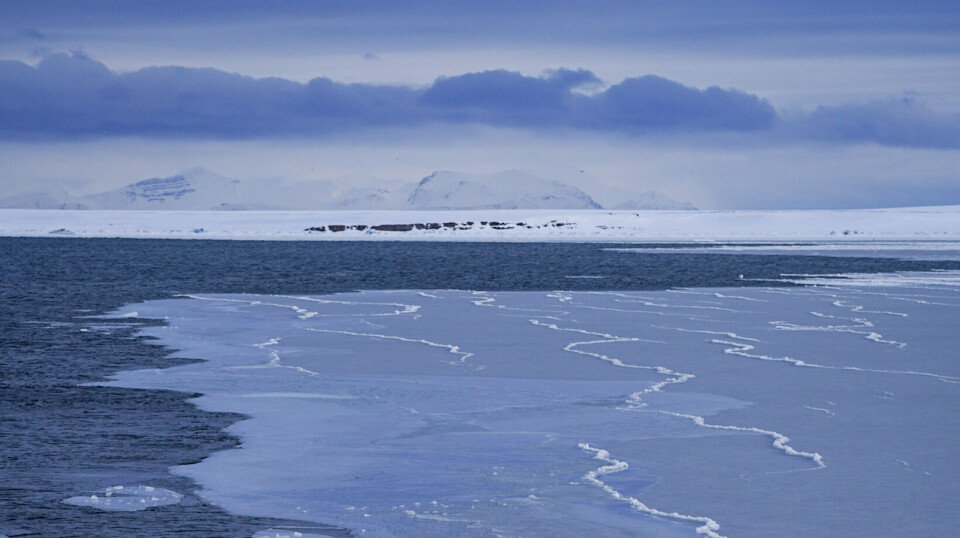THIS CONTENT IS BROUGHT TO YOU BY the University of Bergen - read more

Sea ice influences winter temperatures in East Asia
The Arctic is warming faster than the rest of the planet. Recent research suggests that the loss of sea ice influences winter weather in southern continents, though the effect is often overshadowed by natural variations.
With global warming, temperatures in the Arctic are rising faster than elsewhere in the world. This has already been observed. Since the late 1990s, there have been several unusually cold winters on the continents south of the Arctic seas, in Europe, Asia, and North America.
So far, there is no consensus as to whether these clusters of cold winters are caused by climate change in the Arctic. Though statistical correlations between sea ice loss in the Arctic and Eurasian winter temperatures have been identified, statistics alone cannot prove causal relations.

To predict future winters, the mechanisms behind the potential relationship must be known.
“The atmosphere is chaotic, noisy, and difficult – perhaps impossible – to predict,” says Shengping He.
He is a researcher at the University of Bergen's Geophysical Institute, the Nansen Center, and the Bjerknes Centre.
In recent years, predictions in the range between weather forecasts and climate projections have become an important field of research. An example of such a prediction may be the probability that a winter or a decade will be warmer or colder than normal.
Together with colleagues from several Norwegian and Chinese research institutions, He works to improve the scientific background for these predictions.
Their recent study suggests that the loss of sea ice in the Arctic makes winters colder in East Asia.
Less sea ice makes winters colder
The researchers used simulations from a climate model to investigate whether sea ice loss can cause cold winters in East Asia. With the model, they can do what statistics cannot – alter the sea ice and see what happens. The model has been run not once, but 500 times, providing insight into various outcomes.
These simulations indicate that sea ice loss in the Arctic may contribute to colder winters in East Asia, though natural variations in the weather are a more powerful driver.
“The effect of sea ice may easily be overshadowed by internal variability. As a result, one study may show a result from sea ice, another not,” saya He.
Ice loss behind Arctic warming
In the Arctic, too, temperatures are influenced both by sea ice and changing weather. In contrast to East Asia, sea ice is the main contributor to the Arctic temperature. When the ice is gone, the cold winter air comes into contact with water that is much warmer, and the sea warms the air above.
The most dramatic changes in ice cover have occurred and will continue to occur in summer. But even though changes in ice extent are smaller in winter, the winter ice also changes.
Large areas that become ice free during summer, will by New Year be covered with ice that has frozen during autumn and winter, thinner than the ice that used to be there. Heat passes more easily through thin ice, another factor that influences the exchange between the ocean and the atmosphere, with impacts both within and beyond the Arctic.
Linked through the Siberian High
How less sea ice and a milder Arctic might affect regions further south is unclear.
Several mechanisms have been proposed, such as the idea that Arctic warmth weakens the jet stream, strengthens the high pressure over Siberia, and weakens the polar vortex and the winds in the stratosphere, more than 15 kilometres above the ground.
In Shengping He’s climate model simulations, cold winter months are linked to the high-pressure system located over Siberia. More open water in the Arctic strengthens the high pressure, pushing cold air from the north down over East Asia.
Reference:
He et al. Relative Impacts of Sea Ice Loss and Atmospheric Internal Variability on the Winter Arctic to East Asian Surface Air Temperature Based on Large-Ensemble Simulations with NorESM2, Advances in Atmospheric Sciences, vol. 41, 2024. DOI: 10.1007/s00376-023-3006-9

This content is paid for and presented by the University of Bergen
This content is created by the University of Bergen's communication staff, who use this platform to communicate science and share results from research with the public. The University of Bergen is one of more than 80 owners of ScienceNorway.no. Read more here.
More content from the University of Bergen:
-
Researcher: Politicians fuel conflicts, but fail to quell them
-
The West influenced the Marshall Islands: "They ended up creating more inequality"
-
Banned gases reveal the age of water
-
Researchers discovered extreme hot springs under the Arctic
-
Tiny particles unlock vinegar’s hidden healing potential
-
“Why doesn't it rain more?” asks researcher





































